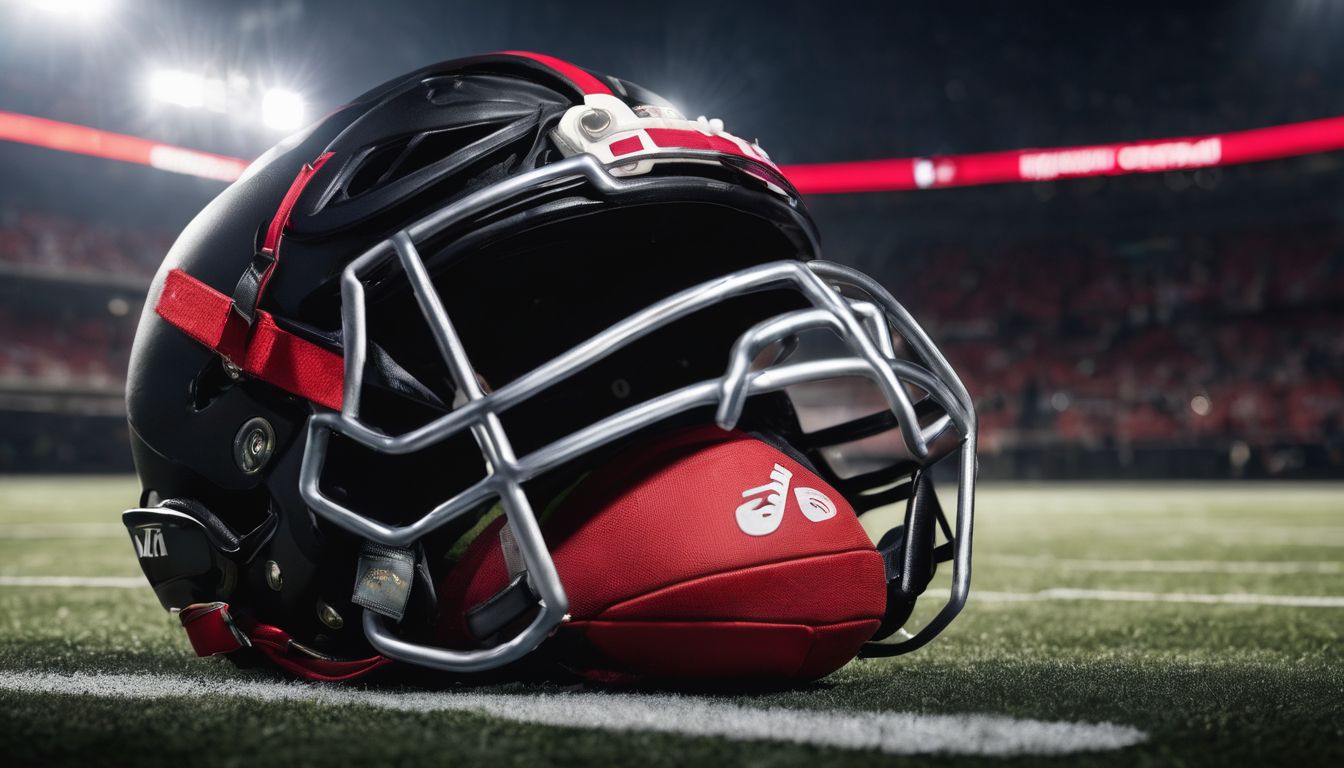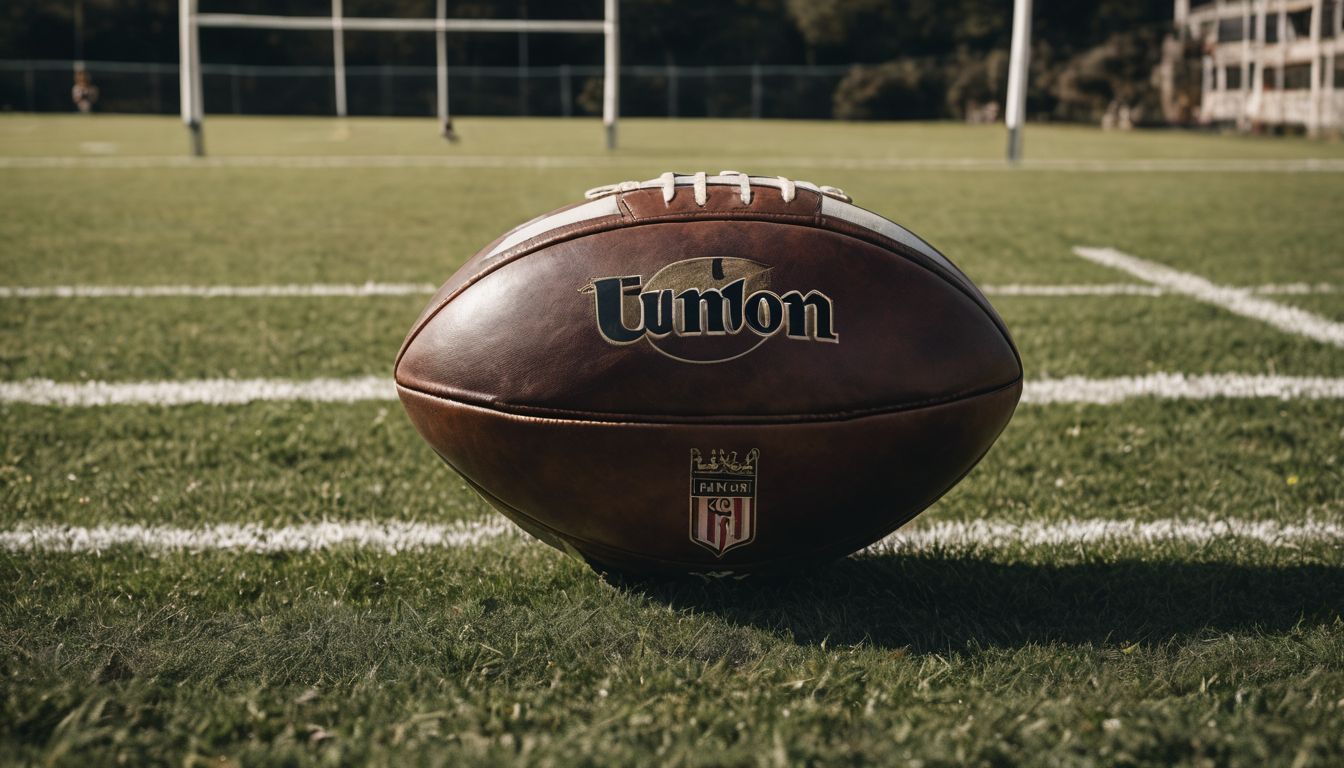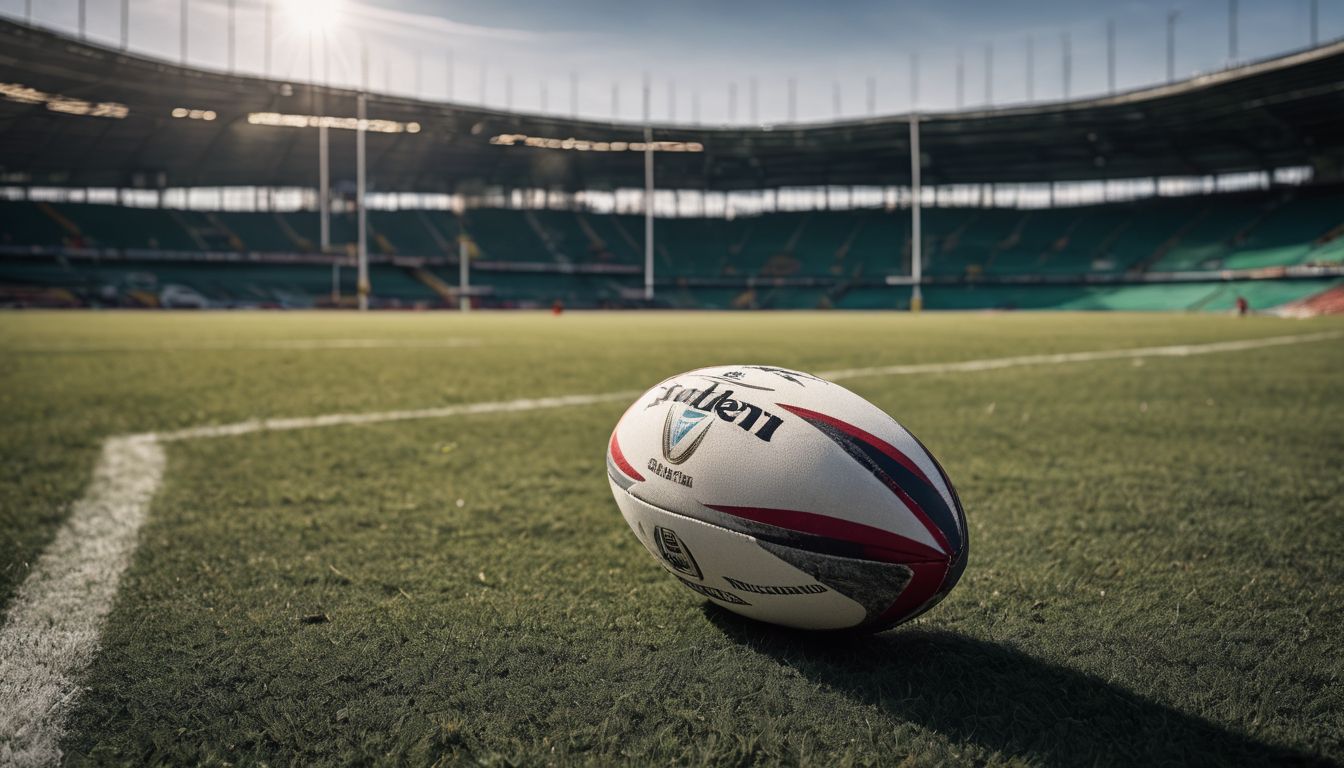Rugby’s thrilling action comes with a risk of injury, challenging players and fans alike. Smart mouthguard technology is revolutionising player safety in the sport. This article explores key techniques and cutting-edge tools that are making rugby safer for everyone.
Dive in to tackle safety head-on!
Key Takeaways
- Smart mouthguard technology is being used in rugby to monitor impacts and manage concussions, improving player safety.
- Proper training techniques, including safe tackling and correct form in playing movements, help reduce the risk of both trauma and overuse injuries in rugby players.
- Rest and recovery are as important as physical training for preventing injuries; adequate rest periods, hydration, nutrition, and sleep are all vital components for athlete well-being.
- Technology plays a significant role in injury prevention with data analysis identifying patterns that lead to injuries and aiding in the creation of tailored training programs.
- Wearable sensors and virtual reality therapy are among the technological advancements that aid rehabilitation processes for injured rugby players.
Common Injuries in Rugby
Trauma and tackles are common causes of injuries in rugby, often resulting in head injuries such as concussions. Overuse injuries from the physical demands of the sport also pose a significant risk to players.
Trauma and tackles
Rugby is a physically demanding sport where tackles are a major part of the game. Proper tackling techniques are crucial for reducing the risk of serious rugby injuries. Coaches and players focus on safe and effective forms of contact to protect both the tackler and the one being tackled.
For instance, learning how to fall correctly can prevent soft tissue sprains and strains that commonly occur during these intense moments of play.
Smart technology is also stepping onto the pitch with advancements like mouthguard sensors. World Rugby’s use of smart mouthguard technology helps monitor impacts during games, aiding in immediate head injury assessment.
This kind of tech plays an essential role in concussion management—a significant concern in rugby safety—by providing real-time data that could signal when a player needs to be evaluated for trauma following a rough tackle or collision.
Head injuries such as concussion
After discussing the physical aspects of rugby in terms of trauma and tackles, it’s essential to address the potential risks associated with head injuries such as concussion. Concussions are common in rugby and can have serious long-term effects if not managed properly.
It is crucial for players, coaches, and medical staff to be aware of the symptoms of concussion and follow proper protocols for diagnosis and treatment. Smart mouthguard technology has been integrated into World Rugby’s Head Injury Assessment as part of global player welfare measures, providing a proactive approach to identifying potential concussions on the field.
Furthermore, injury prevention strategies need to include specific training on recognising signs of concussion and guidelines for safe return-to-play post-injury. Additionally, risk assessment should be an integral part of injury management plans to ensure that players are adequately protected from further head injuries during matches or practice sessions.
Overuse injuries
Overuse injuries in rugby are often the result of repetitive stress on muscles and joints. These injuries can develop gradually over time and are commonly associated with activities like running, jumping, or throwing.
Risk reduction strategies such as proper warm-up techniques and muscle conditioning play a crucial role in preventing overuse injuries. It’s important for players to pay attention to their bodies and take adequate rest when needed to avoid these types of common rugby injuries.
Training intensity plays a pivotal role in the development of overuse injuries, making it essential for coaches and players to implement suitable training programs that consider gradual progression and sufficient recovery periods.
Proper nutrition also supports injury prevention by ensuring muscles have the necessary nutrients for repair and rebuilding after strenuous activity. Incorporating these strategies into training routines can help mitigate the risk of overuse-related issues among rugby players while promoting overall player welfare.
Preventing Rugby Injuries
Proper technique is vital in preventing rugby injuries, with players needing to be trained on safe tackling and contact methods. Training and conditioning are also important in building strength, agility, and resilience to reduce the risk of overuse injuries.
Importance of proper technique
Using correct techniques when playing rugby is crucial for preventing injuries. Proper form and execution of movements such as tackling, scrummaging, and passing can significantly reduce the risk of trauma and overuse injuries.
Training in proper technique also helps players avoid unnecessary strain on their muscles and joints, decreasing the likelihood of soft tissue sprains and strains. Implementing comprehensive training programmes that focus on fundamental skills with an emphasis on safety rules can help players learn effective ways to minimise injury risks during matches and practice sessions.
Moreover, promoting the importance of adhering to safe playing methods contributes to cultivating a safer sporting environment for all participants. The emphasis on mastering foundational rugby tactics further strengthens injury prevention efforts by instilling sound principles among athletes from grassroots levels upwards.
Training and conditioning
- Strength and endurance training: Building muscular strength and endurance through weight training, resistance exercises, and cardiovascular workouts can improve overall physical fitness, reducing the risk of overuse injuries.
- Flexibility exercises: Incorporating regular stretching and flexibility routines helps enhance joint mobility, decreasing the likelihood of muscle strains and ligament injuries during intense gameplay.
- Balance and agility drills: Practising balance and agility exercises can aid in improving coordination and body control, which is essential for avoiding traumatic injuries during tackles or collisions on the field.
- Injury prevention programmes: Following structured injury prevention programmes tailored for rugby players can help address sport-specific movements while minimising the risk of common rugby injuries such as ankle sprains, knee injuries, and shoulder dislocations.
- Rest and recovery strategies: Implementing adequate rest periods between training sessions is vital for allowing the body to recover from strenuous workouts, reducing fatigue-related injuries. Additionally, incorporating active recovery techniques such as foam rolling or massage therapy can alleviate muscle soreness and prevent overuse injuries.
Rest and recovery
After intense training and conditioning, rest and recovery are crucial for rugby players. Rest allows the body to repair and rebuild muscle tissue, reducing the risk of overuse injuries.
Recovery techniques such as proper hydration, nutrition, and sleep play a key role in preventing fatigue-related injuries. Incorporating rest days into training schedules is essential for allowing the body to recover from physical exertion.
It’s important for players to listen to their bodies and incorporate active recovery methods such as stretching or light exercise on rest days. Adequate rest and recovery not only prevent injuries but also contribute to improved performance on the field.
Technologies Leading the Way
Mouthguard technology, performance analysis, and data and technology adoption are revolutionising injury prevention in rugby – read on to discover the latest advancements.
Mouthguard technology
Smart mouthguard technology is a game-changer in rugby injury prevention. With the integration of this technology into World Rugby’s Head Injury Assessment, players’ welfare has taken a step forward.
The use of smart mouthguards enables real-time monitoring for potential head injuries, providing crucial data to aid in early assessment and management.
These advanced mouthguards are essential tools to detect impacts that may lead to brain injury. By tracking force and impact, they provide valuable information for coaches and medical staff to ensure player safety on the field.
Performance analysis
Rugby teams are utilising performance analysis to improve player skills and identify areas for development. Data analysis provides insights into player performance, helping coaches make informed decisions.
This technology enables teams to track individual players’ progress and compare their performance against previous games or other team members. By leveraging these insights, coaches can tailor training programmes to target specific areas of improvement, ultimately enhancing overall team performance on the field.
Moreover, data analysis in rugby also plays a crucial role in injury prevention by identifying factors that may contribute to the risk of injuries such as fatigue levels or poor technique during tackles.
The information gathered from performance analysis can be used to modify training regimens and technique correction sessions aimed at reducing the occurrence of common rugby injuries like soft tissue sprains and strains.
Additionally, it aids in measuring the effectiveness of safety rules and equipment in reducing injury risk, further ensuring player welfare and game integrity.
Data and technology adoption
Performance analysis provides valuable insights, but data and technology adoption offer a deeper understanding of player welfare and injury prevention in rugby. Smart mouthguard technology, integrated into World Rugby’s Head Injury Assessment, plays a crucial role in identifying potential head injuries.
Furthermore, sports data analysis allows for the identification of high-risk areas and patterns contributing to injuries on the field. These advancements bring about proactive measures in injury prevention by focusing on specific areas such as concussion management and overall player safety.
Utilising advanced technologies not only ensures a safer playing environment but also contributes to the continuous improvement of injury prevention strategies within rugby.
Managing and Treating Rugby Injuries
Injury prevention and management is crucial in rugby, with proper first aid principles and rest being key. The use of technology in rehabilitation also plays a significant role in ensuring speedy recovery and return to play.
Injury prevention and management tips
To prevent and manage rugby injuries, it is important to focus on proper techniques and equipment. Here are some tips:
- Use the right protective gear, such as mouthguards and headgear, to reduce the risk of head injuries.
- Ensure thorough warm-up and cool-down routines before and after training or matches to prevent soft tissue injuries.
- Implement proper tackling techniques to minimise the risk of trauma-related injuries.
- Encourage rest and recovery periods to allow the body time to recuperate from the physical demands of the sport.
- Consider using smart mouthguard technology to detect and address potential brain injuries early on.
Importance of rest and recovery
After taking steps to prevent and manage injuries, the importance of rest and recovery cannot be overlooked in rugby. It is crucial for players to allow their bodies time to recover from the physical demands of the sport.
Rest enables muscles to repair and rebuild after intense training or matches, reducing the risk of overuse injuries such as strains and sprains. Recovery periods also play a vital role in preventing fatigue-related issues that can lead to decreased performance and increased risk of injury.
Implementing designated rest days into training schedules, alongside proper nutrition and hydration, aids in promoting healing and maintaining overall player well-being.
Understanding the significance of rest and recovery is essential for injury prevention in rugby. In addition, incorporating these recovery periods into sports first aid principles can contribute positively towards long-term player health.
Use of technology in rehabilitation
Smart technology is revolutionising the rehabilitation process for rugby players. Advanced equipment and devices are assisting in monitoring progress and customising recovery plans based on individual needs.
From wearable sensors to virtual reality therapy, technology is playing a vital role in expediting the rehabilitation journey for injured athletes, ensuring a safe return to the game.
Global rugby organisations are embracing cutting-edge technologies to aid in injury recovery, providing personalised care while minimising risk of re-injury. Smart rehabilitation tools empower athletes to track their progress and adhere to tailored treatment plans, ultimately enhancing their overall wellness and performance on the field.
Conclusion
Injury prevention in rugby relies on proper techniques and advanced technologies. Implementing smart mouthguard technology has significantly impacted player welfare, specifically addressing head injuries and concussions.
With a focus on training, safe play and injury management, the future of rugby embraces innovation for the safety and well-being of its athletes. The combination of effective techniques and cutting-edge technologies is crucial for reducing the risk of injuries in this demanding sport.
FAQs
1. What are some key techniques for injury prevention in rugby?
Effective rugby injury prevention techniques include proper training, using the right equipment, and employing sports injury management strategies to reduce the risk of harm during play.
2. How does technology help prevent injuries in rugby players?
Technology like smart mouthguard technology helps with brain injury detection and management by monitoring impacts during games, which aids concussion management in sports.
3. Can data analysis improve player safety on the rugby field?
Yes, the impact of data analysis in rugby is significant as it allows coaches and medical teams to understand causes of rugby injuries better and tailor concussion prevention efforts more accurately.
4. Does World Rugby use any special technology for player safety?
World Rugby’s use of smart mouthguard technology showcases how they’re leading the way in applying advanced tools for real-time brain injury detection and sports injury prevention.
5. Why is it important for a rugby team to have good first aid knowledge?
Rugby first aid knowledge is crucial because immediate and correct response to injuries can significantly lessen their severity and support effective recovery, thereby ensuring players’ well-being.








